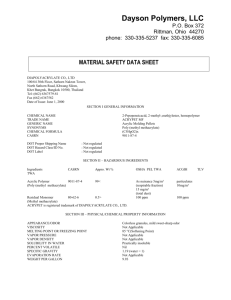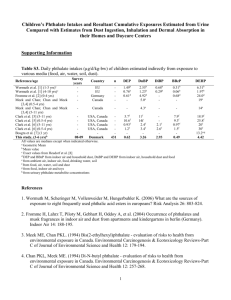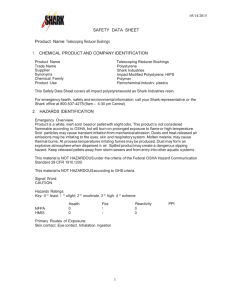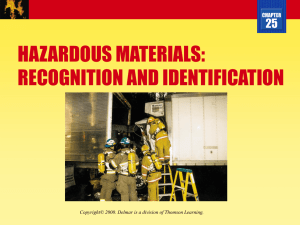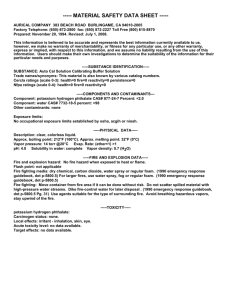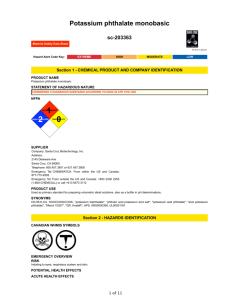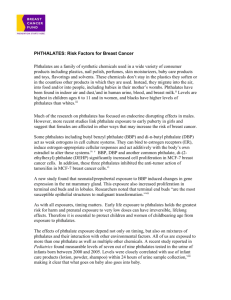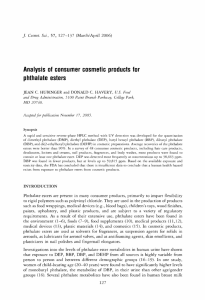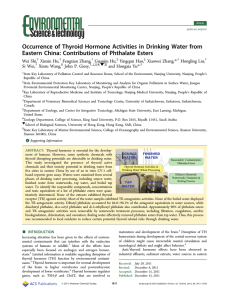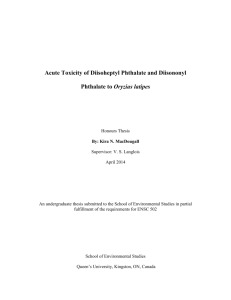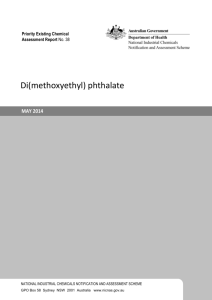November 11, 2004
advertisement
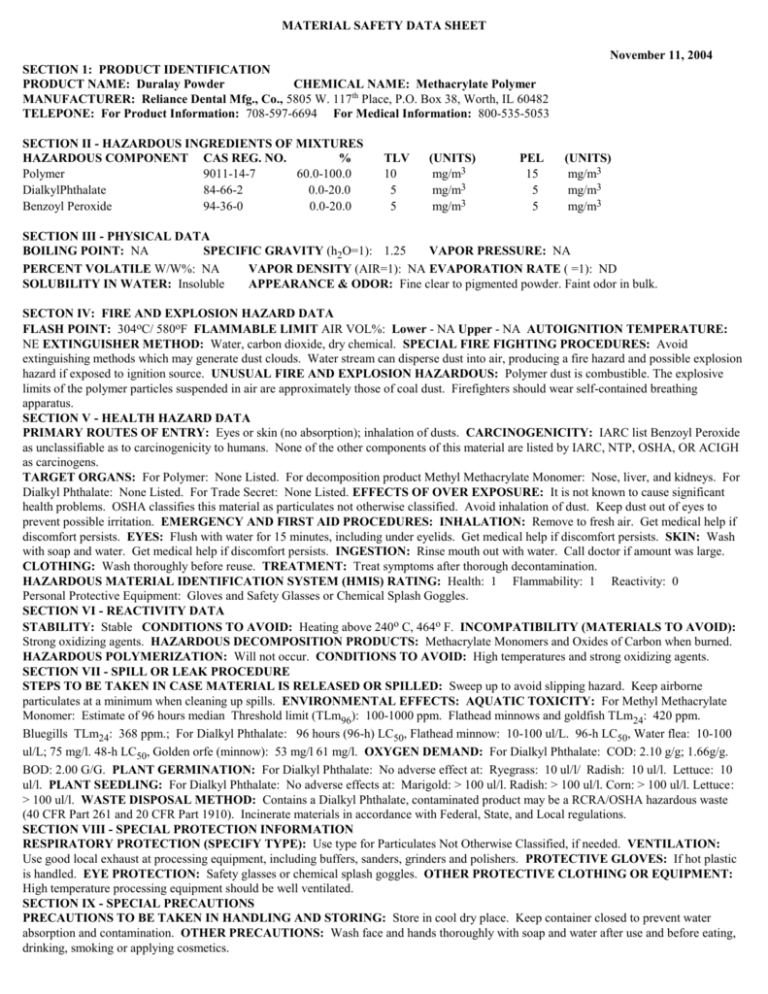
MATERIAL SAFETY DATA SHEET November 11, 2004 SECTION 1: PRODUCT IDENTIFICATION PRODUCT NAME: Duralay Powder CHEMICAL NAME: Methacrylate Polymer MANUFACTURER: Reliance Dental Mfg., Co., 5805 W. 117th Place, P.O. Box 38, Worth, IL 60482 TELEPONE: For Product Information: 708-597-6694 For Medical Information: 800-535-5053 SECTION II - HAZARDOUS INGREDIENTS OF MIXTURES HAZARDOUS COMPONENT CAS REG. NO. % Polymer 9011-14-7 60.0-100.0 DialkylPhthalate 84-66-2 0.0-20.0 Benzoyl Peroxide 94-36-0 0.0-20.0 TLV 10 5 5 (UNITS) mg/m3 mg/m3 mg/m3 PEL 15 5 5 (UNITS) mg/m3 mg/m3 mg/m3 SECTION III - PHYSICAL DATA BOILING POINT: NA SPECIFIC GRAVITY (h2O=1): 1.25 VAPOR PRESSURE: NA PERCENT VOLATILE W/W%: NA VAPOR DENSITY (AIR=1): NA EVAPORATION RATE ( =1): ND SOLUBILITY IN WATER: Insoluble APPEARANCE & ODOR: Fine clear to pigmented powder. Faint odor in bulk. SECTON IV: FIRE AND EXPLOSION HAZARD DATA FLASH POINT: 304oC/ 580oF FLAMMABLE LIMIT AIR VOL%: Lower - NA Upper - NA AUTOIGNITION TEMPERATURE: NE EXTINGUISHER METHOD: Water, carbon dioxide, dry chemical. SPECIAL FIRE FIGHTING PROCEDURES: Avoid extinguishing methods which may generate dust clouds. Water stream can disperse dust into air, producing a fire hazard and possible explosion hazard if exposed to ignition source. UNUSUAL FIRE AND EXPLOSION HAZARDOUS: Polymer dust is combustible. The explosive limits of the polymer particles suspended in air are approximately those of coal dust. Firefighters should wear self-contained breathing apparatus. SECTION V - HEALTH HAZARD DATA PRIMARY ROUTES OF ENTRY: Eyes or skin (no absorption); inhalation of dusts. CARCINOGENICITY: IARC list Benzoyl Peroxide as unclassifiable as to carcinogenicity to humans. None of the other components of this material are listed by IARC, NTP, OSHA, OR ACIGH as carcinogens. TARGET ORGANS: For Polymer: None Listed. For decomposition product Methyl Methacrylate Monomer: Nose, liver, and kidneys. For Dialkyl Phthalate: None Listed. For Trade Secret: None Listed. EFFECTS OF OVER EXPOSURE: It is not known to cause significant health problems. OSHA classifies this material as particulates not otherwise classified. Avoid inhalation of dust. Keep dust out of eyes to prevent possible irritation. EMERGENCY AND FIRST AID PROCEDURES: INHALATION: Remove to fresh air. Get medical help if discomfort persists. EYES: Flush with water for 15 minutes, including under eyelids. Get medical help if discomfort persists. SKIN: Wash with soap and water. Get medical help if discomfort persists. INGESTION: Rinse mouth out with water. Call doctor if amount was large. CLOTHING: Wash thoroughly before reuse. TREATMENT: Treat symptoms after thorough decontamination. HAZARDOUS MATERIAL IDENTIFICATION SYSTEM (HMIS) RATING: Health: 1 Flammability: 1 Reactivity: 0 Personal Protective Equipment: Gloves and Safety Glasses or Chemical Splash Goggles. SECTION VI - REACTIVITY DATA STABILITY: Stable CONDITIONS TO AVOID: Heating above 240o C, 464o F. INCOMPATIBILITY (MATERIALS TO AVOID): Strong oxidizing agents. HAZARDOUS DECOMPOSITION PRODUCTS: Methacrylate Monomers and Oxides of Carbon when burned. HAZARDOUS POLYMERIZATION: Will not occur. CONDITIONS TO AVOID: High temperatures and strong oxidizing agents. SECTION VII - SPILL OR LEAK PROCEDURE STEPS TO BE TAKEN IN CASE MATERIAL IS RELEASED OR SPILLED: Sweep up to avoid slipping hazard. Keep airborne particulates at a minimum when cleaning up spills. ENVIRONMENTAL EFFECTS: AQUATIC TOXICITY: For Methyl Methacrylate Monomer: Estimate of 96 hours median Threshold limit (TLm96): 100-1000 ppm. Flathead minnows and goldfish TLm24: 420 ppm. Bluegills TLm24: 368 ppm.; For Dialkyl Phthalate: 96 hours (96-h) LC50, Flathead minnow: 10-100 ul/L. 96-h LC50, Water flea: 10-100 ul/L; 75 mg/l. 48-h LC50, Golden orfe (minnow): 53 mg/l 61 mg/l. OXYGEN DEMAND: For Dialkyl Phthalate: COD: 2.10 g/g; 1.66g/g. BOD: 2.00 G/G. PLANT GERMINATION: For Dialkyl Phthalate: No adverse effect at: Ryegrass: 10 ul/l/ Radish: 10 ul/l. Lettuce: 10 ul/l. PLANT SEEDLING: For Dialkyl Phthalate: No adverse effects at: Marigold: > 100 ul/l. Radish: > 100 ul/l. Corn: > 100 ul/l. Lettuce: > 100 ul/l. WASTE DISPOSAL METHOD: Contains a Dialkyl Phthalate, contaminated product may be a RCRA/OSHA hazardous waste (40 CFR Part 261 and 20 CFR Part 1910). Incinerate materials in accordance with Federal, State, and Local regulations. SECTION VIII - SPECIAL PROTECTION INFORMATION RESPIRATORY PROTECTION (SPECIFY TYPE): Use type for Particulates Not Otherwise Classified, if needed. VENTILATION: Use good local exhaust at processing equipment, including buffers, sanders, grinders and polishers. PROTECTIVE GLOVES: If hot plastic is handled. EYE PROTECTION: Safety glasses or chemical splash goggles. OTHER PROTECTIVE CLOTHING OR EQUIPMENT: High temperature processing equipment should be well ventilated. SECTION IX - SPECIAL PRECAUTIONS PRECAUTIONS TO BE TAKEN IN HANDLING AND STORING: Store in cool dry place. Keep container closed to prevent water absorption and contamination. OTHER PRECAUTIONS: Wash face and hands thoroughly with soap and water after use and before eating, drinking, smoking or applying cosmetics.




